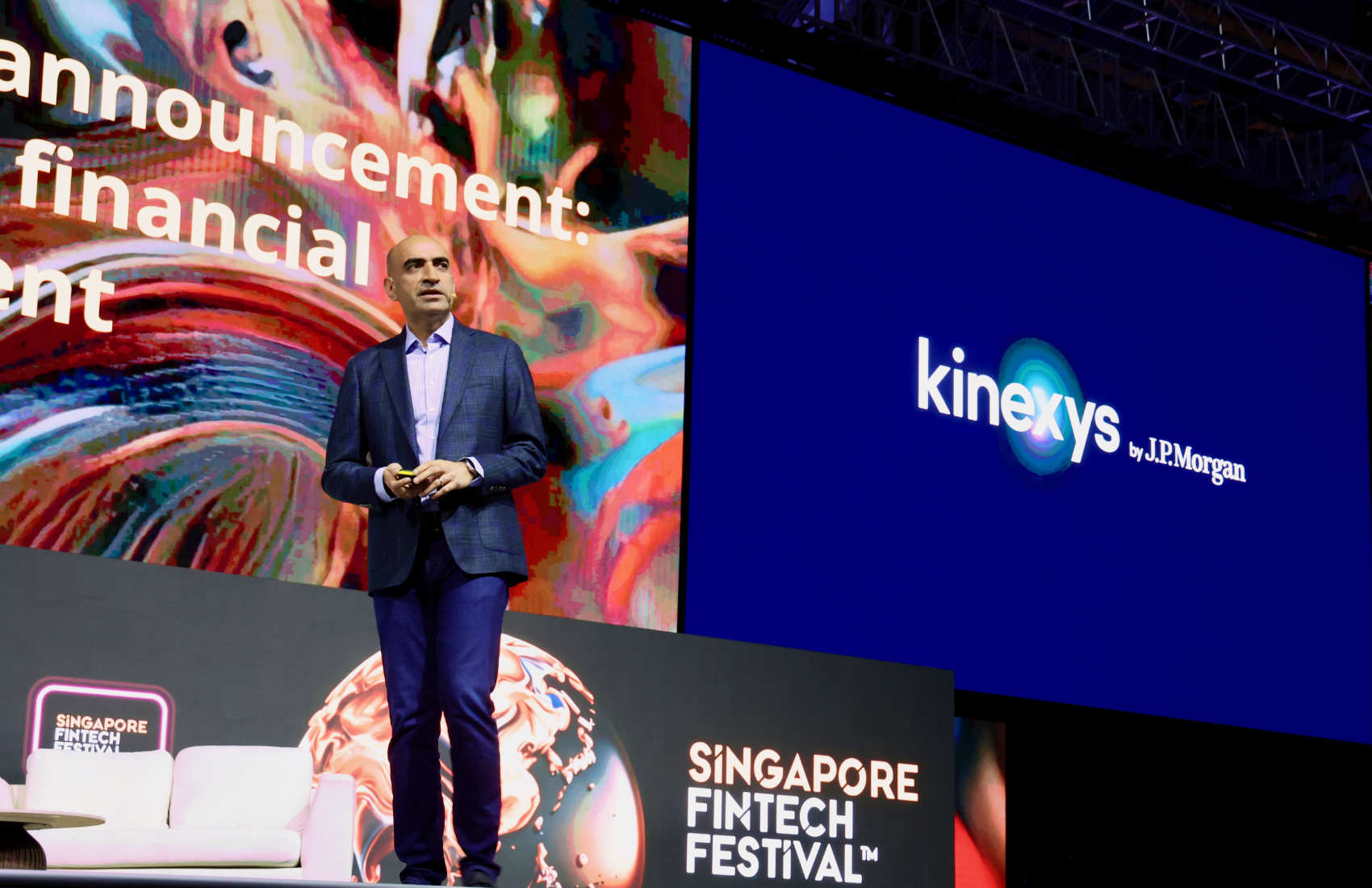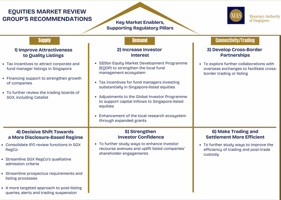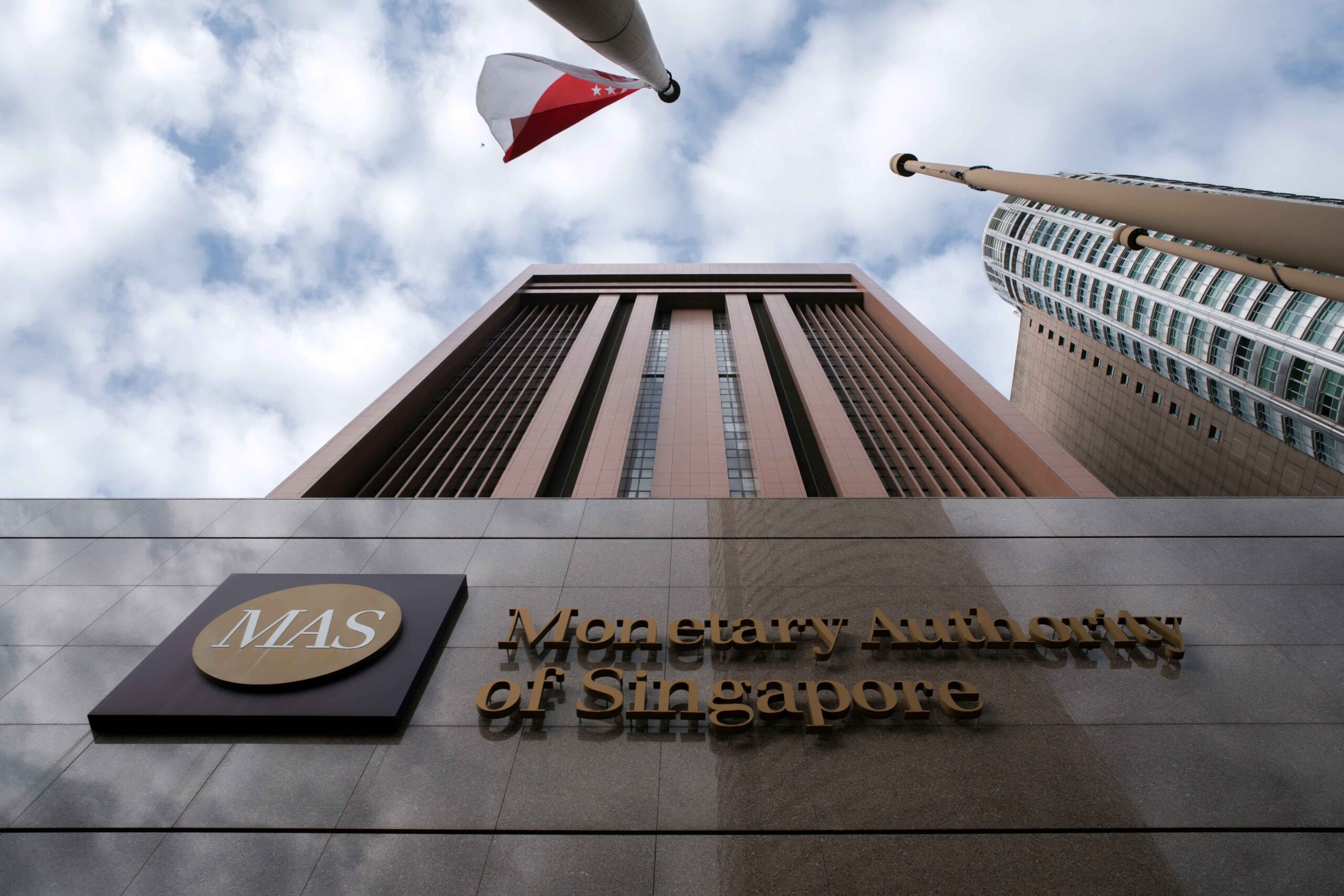OCBC Bank Launches Pioneering Blockchain-Powered Commercial Paper Program
OCBC Bank has launched a pioneering S$1.28 billion blockchain-powered commercial paper program, positioning itself at the forefront of financial innovation. As the first institution to issue US Commercial Paper fully on blockchain, OCBC is reshaping the landscape of short-term funding by enhancing transaction efficiency and accessing a vast US$1.4 trillion market. Supported by JPMorgan's Digital Debt Service, this initiative reflects a growing trend of blockchain integration in traditional finance, providing strategic liquidity solutions amidst global economic challenges.
Introduction to the Blockchain Commercial Paper Initiative
OCBC Bank has taken a pioneering step by launching the world's first fully blockchain-powered issuance of US Commercial Paper (USCP), establishing a US$1 billion program that integrates cutting-edge technology with traditional finance systems. This innovative initiative marks a milestone where the entire commercial paper lifecycle—from issuance and settlement to record-keeping and servicing—is executed on blockchain, setting a new standard in short-term funding markets. By leveraging JPMorgan's Digital Debt Service application alongside Kinexys Digital Assets tokenization platform, OCBC streamlines the issuance process and significantly accelerates settlement times, enabling near-instantaneous funding transfers occurring within minutes of transaction completion. This initiative grants OCBC efficient access to the massive US$1.4 trillion USCP market and allows deeper penetration into a highly liquid, essential funding source for corporations globally.
The program's success is underpinned by top-tier short-term credit ratings—Moody's P-1 and Fitch's F1+—reflecting strong market validation for blockchain-based financing solutions. Kenneth Lai, Head of Global Markets at OCBC, highlights how Singapore’s blockchain ecosystem is rapidly maturing, with this commercial paper program moving blockchain efforts beyond proof of concept into full commercialisation. This initiative follows OCBC’s earlier blockchain advancements such as intraday repo transactions, evidencing a strategic and systematic approach rather than an isolated experiment.
By pioneering this innovative approach, OCBC is demonstrating the practical benefits of blockchain integration in traditional finance, including enhanced operational efficiency, transparency, and safer transaction execution. This initiative therefore not only revolutionises short-term funding capabilities but also contributes to the wider institutional adoption of blockchain technology, underpinning the future trajectory of financial markets.
Historical Development of Commercial Papers
The commercial paper market's origins trace back to the early 19th century in the United States, emerging as a crucial tool for companies in credit-scarce regions to secure working capital. At that time, banking regulations limited banks to operations within single states, creating regional credit imbalances. This environment laid fertile ground for an alternative short-term financing mechanism. A pivotal moment came in 1869 when Marcus Goldman, a German immigrant, started purchasing promissory notes from local merchants and reselling them to commercial banks in New York. This method effectively established the foundation of the modern commercial paper market, bridging liquidity needs between businesses and financial institutions.
By the late 19th century, Goldman’s partnership with Samuel Sachs and Henry Goldman, culminating in the formation of Goldman Sachs & Co. by 1888, marked a significant evolution in financial intermediation. The company’s entrance to the New York Stock Exchange in 1896 further solidified its influence. The commercial paper market expanded considerably in the early 20th century, with the Federal Reserve Bank of New York recording a volume of $874 million in 1918, which grew to nearly $1.3 billion by 1920. That same year witnessed the innovation of “direct paper,” spearheaded by General Motors Acceptance Corporation, who began borrowing through short-term notes without dealer intermediaries, a practice that gradually diversified issuance channels.
The 1920s saw the commercial paper market broaden as consumer finance firms also began issuing short-term notes directly, though growth stalled during the Great Depression. A crucial strategic move came in 1932 when Goldman Sachs acquired Chicago-based Hathaway & Co., transforming itself into one of the largest commercial paper dealers nationwide. This positioned them to dominate industry practices for decades. Post-World War II, commercial paper issuance accelerated as corporations increasingly embraced this flexible funding vehicle. By the mid-1960s, the rising costs of bank credit further propelled the commercial paper market’s expansion, culminating in a vibrant, multi-trillion dollar ecosystem integral to short-term corporate finance today, reflecting its evolution from the earliest merchant notes to a sophisticated financial market segment.
Technological Framework of OCBC's Blockchain Program
OCBC's blockchain commercial paper program is architected on a cutting-edge technological framework, underpinned by its strategic partnership with JPMorgan and leveraging the Digital Debt Service (DDS) application. This program, representing a pioneering $1 billion digital US Commercial Paper (USCP) issuance, integrates enterprise-grade blockchain technology specifically tailored for debt market innovation. At its core, the program utilies JPMorgan's DDS app, which is built on Kinexys Digital Assets platform—an advanced multi-asset tokenisation infrastructure designed for seamless issuance, settlement, and servicing of tokenised debt. The system effectively digitises both the commercial paper instruments and settlement funds into blockchain-based tokens, enabling a fully on-chain lifecycle management that covers issuance, record-keeping, and real-time transactions.
This blockchain architecture allows for near-instantaneous T+0 settlements, drastically reducing the traditionally multi-day settlement delays common in commercial paper markets. OCBC can receive funds within minutes post-transaction, a transformative improvement in liquidity management that enhances cash flow efficiency. The shared ledger design offers immutable, auditable, and transparent visibility to all participants, mitigating counterparty risks and improving trust via a single source of truth. Smart contract automation further streamlines corporate actions and settlement procedures, obviating traditional intermediaries and reducing operational overhead.
Complementing JPMorgan’s role as the sole dealer facilitating digital debt transactions, the program employs State Street as the custodian for the tokenised assets, creating a closed-loop ecosystem that merges cutting-edge blockchain tech with institutional-grade custody and compliance. By deploying the Kinexys platform rather than creating proprietary blockchain infrastructure, OCBC accelerates adoption while leveraging a secure, scalable foundation purpose-built for asset tokenisation in capital markets. Overall, this technological framework redefines commercial paper operations by enhancing liquidity management, providing real-time settlement solutions, and increasing operational transparency—hallmark attributes of next-generation digital finance innovation.
Blockchain in the Financial Services Landscape
Blockchain technology has fundamentally transformed the financial services landscape by disrupting traditional processes and enabling innovative applications across various sectors. Key among these is the revolution of cross-border payments, where blockchain eliminates intermediaries, speeds up transfers, significantly cuts costs, and improves transparency. This addresses longstanding inefficiencies in global remittances, enhancing financial inclusion for underserved populations and ensuring transactions are accessible round-the-clock without geographic limitations. Moreover, the integration of blockchain in trade finance has replaced paper-heavy and error-prone workflows with secure, tamper-proof digital records promoting trust and collaboration among trading partners.
Decentralized Finance (DeFi) epitomises blockchain's push toward democratizing financial services by removing intermediaries in lending, borrowing, and asset exchange. These self-executing smart contracts increase transactional efficiency, reduce costs, and expand accessibility across demographics traditionally excluded from banking services. The emergence of asset tokenization further amplifies blockchain’s impact by converting physical and digital assets into tradable, divisible tokens. This innovation enhances liquidity, lowers barriers to investment, and facilitates transparent price discovery in markets once constrained by illiquidity and complexity.
Stablecoins represent a burgeoning frontier within digital payments, offering a scalable tokenized cash alternative with real potential to reshape treasury management and capital market settlements. While currently constituting a modest fraction of global money flows, their rapid adoption highlights blockchain’s growing influence on mainstream financial infrastructures. As blockchain also addresses inefficiencies in capital markets—reducing regulatory complexity, operational risks, and costs—it positions itself as a core driver of next-generation digital finance.
Despite challenges such as regulatory uncertainty and scalability, ongoing improvements and sustainability efforts promise to accelerate blockchain adoption. Collectively, these advances underscore blockchain’s role as a foundational technology underpinning the broader evolution of digital finance, offering more secure, inclusive, and efficient financial ecosystems worldwide.

Impact of Blockchain on the US Commercial Paper Market
Blockchain technology is reshaping the US commercial paper (USCP) market by fundamentally transforming issuance, trading, settlement, and liquidity dynamics. Issuance on blockchain leverages tokenisation models, including native digital assets ("bond tokens") and tokenized bonds, which streamline core processes by eliminating paperwork and enabling direct issuer-investor interactions. This digital approach automates corporate actions such as interest payments and maturity redemptions via smart contracts, substantially reducing operational costs and intermediary roles. OCBC's issuance of $100 million in tokenized commercial paper using JPMorgan's Digital Debt Service platform highlights the tangible shift toward blockchain-based issuance frameworks capable of supporting large-scale markets.
Trading activity is enhanced with 24/7 market access and fractional ownership, democratizing investor participation and alleviating constraints of traditional market hours. Blockchain's transparency offers real-time visibility into order books, while direct issuer-investor connections reduce counterparty risk. Perhaps the most impactful change is real-time settlement, progressing from legacy T+1/T+2 cycles to T+0 atomic settlement, where transfer of ownership and payment occur simultaneously, mitigating principal risk. This shift also simplifies reconciliation by maintaining immutable, single ledgers accessible to all participants, effectively dismantling the traditional web of intermediaries and manual messaging processes.
Liquidity improvements emerge from expanded market access and reduced settlement risk, fostering higher trading volumes and enabling institutional investors to access yield-bearing tokenized assets. The projected growth of tokenized assets—from $26.4 billion in mid-2025 to an estimated $19 trillion by 2033—emphasizes blockchain's potential to unlock substantial capital flows within the USCP market. Furthermore, OCBC's strategic involvement positions it to capitalize on this $1.4 trillion market by deploying blockchain-enabled issuance and trading capabilities that promise efficiency gains and competitive advantage in short-term funding mechanisms widely used by corporations for operational liquidity.
Efficiency and Challenges of Blockchain-based Financial Transactions
Blockchain technology significantly enhances the efficiency of financial transactions by accelerating processing speeds and increasing transparency. Studies indicate that blockchain implementation in financial services reduces transaction costs by approximately 42.6% and cuts cross-border payment times by 78.3%, shifting settlement times from days to near real-time. This efficiency is exemplified by platforms like Ripple, which lowers transaction fees from traditional 5-10% rates to a fraction of a percent, while reducing settlement duration to minutes. Similarly, trade finance platforms such as Marco Polo have compressed documentation processing from weeks to mere hours, thereby improving liquidity and cash flow management for businesses.
The transparency facilitated by blockchain manifests in immutable transaction records accessible to authorized parties, enabling end-to-end visibility across financial supply chains and promoting trust among market participants. Storing documents on-chain eradicates the inefficiencies of paper-based record reconciliation, while smart contracts automate execution based on predefined criteria, minimizing human error and third-party verification.
Despite these benefits, adoption faces hurdles including scalability constraints, as existing blockchain networks struggle with high transaction volumes, coupled with energy consumption concerns intrinsic to certain consensus mechanisms. Integration complexity with legacy systems poses additional technical barriers. Regulatory ambiguity across jurisdictions creates legal uncertainty, posing challenges for compliance and privacy, given that transaction transparency may inadvertently expose identifiable patterns. Furthermore, the innovative complexity of blockchain technologies introduces adoption resistance among traditional financial institutions.
To overcome such challenges in markets including commercial paper, strategies involve deploying hybrid blockchain models that merge public transparency with private governance controls, and fostering standardized frameworks through collaboration between regulators and industry players. Phased adoption beginning with targeted, high-impact use cases, alongside proactive regulatory engagement and sustained investment in scalable blockchain infrastructure, are crucial. These measures collectively aim to harness blockchain’s transformative potential in streamlining commercial paper transactions while ensuring regulatory compliance and operational robustness.
Future Directions and Strategic Implications
The evolution of blockchain technology in tokenised debt markets signals a transformative future characterised by rapid growth, broadening applications, and strategic innovation. Forecasts indicate that the tokenised real-world asset market will surge from roughly $26.4 billion in mid-2025 to an astonishing $19 trillion by 2033, underscoring an institutional appetite for blockchain-enabled yield-bearing digital assets rather than speculative momentum. Notable institutional milestones, such as OCBC’s $100 million issuance of tokenised commercial paper via JPMorgan’s Digital Debt Service platform coupled with State Street custody, exemplify the shift from pilot projects to mainstream adoption.
Emerging trends reinforce this momentum through the maturation of institutional infrastructure—including custodial evolution integrating legacy systems with blockchain—and the extension of tokenisation across diverse debt forms, from sovereign bonds to private credit and SME financing. Increasingly, tokenised debt instruments are designed to dovetail with central bank digital currencies and harness artificial intelligence for automated regulatory compliance. Advanced smart contracts facilitate complex multi-jurisdictional covenants and payment structures, supporting functional sophistication beyond early implementations.
Liquidity dynamics are fundamentally altered as tokenisation enables 24/7 trading, fractional ownership, and the development of active secondary markets traditionally unavailable for less liquid assets. Compliance processes benefit from blockchain’s transparency and embedded regulatory automation, steeply reducing fraud risk and operational costs—estimated at a 30-50% decrease in issuance and servicing expenses. Parallelly, regulatory frameworks across the EU, US, Switzerland, and Singapore continue evolving to provide a harmonized, supportive environment conducive to scale.
From a strategic perspective, financial institutions are advised to adopt staged pilot programs emphasisng interoperability with major custodial platforms while embracing hybrid solutions that integrate rather than replace existing infrastructure. Investors should develop dedicated digital asset allocation frameworks and leverage fractionalisation to diversify across geographies and sectors. Regulators, meanwhile, face imperatives to harmonise cross-border standards and foster innovation through balanced oversight and sandbox initiatives.
Looking ahead to the 2030 horizon, the tokenisation of commercial paper and sovereign debt is poised to become routine, with decentralized finance protocols increasingly interfacing with regulated institutional markets. Secondary tokenized debt markets may rival conventional bond exchanges in scale and volume. The resulting redefinition of capital markets infrastructure presents an unprecedented opportunity for early movers embracing blockchain’s promise of enhanced liquidity, operational efficiency, and compliance autonomy to lead the future of short-term funding and broader financial innovation.
OCBC Bank's launch of a blockchain-powered commercial paper program marks a significant leap in financial innovation. By leveraging state-of-the-art technology, OCBC enhances transaction efficiency and secures strategic market access, setting new standards for liquidity management. As blockchain becomes integral to finance, OCBC's pioneering move exemplifies the transformative potential of digital technologies in traditional instruments. This initiative not only boosts OCBC's competitive edge but also heralds a future where blockchain underpins financial markets, offering robust solutions to global economic challenges.
Let us know what you think about this topic, and what do you want to hear next.
Sources consulted:
- Bank of England - Commercial Paper Markets: An International Survey
- Bank for International Settlements - Annual Economic Report 2025: DLT and Bond Markets
- Calibraint - Tokenized Bonds and Loans Transformation
- Cointrust - OCBC Launches US$1B Blockchain-Based USCP Program
- Finextra - OCBC taps blockchain for US$1bn digital US commercial paper programme
- FinTechNews - OCBC Blockchain Commercial Paper Program
- Goldman Sachs - History and Commercial Paper Dealer System
- IndexBox - OCBC Launches US$1B Blockchain Commercial Paper Program
- Investax - Tokenized Bonds: A Strategic Advantage in the Evolving Debt Capital Markets
- Infosys BPM - Blockchain Technology Impact in Financial Services
- Tech Coffeehouse - OCBC's Blockchain US Commercial Paper Innovation
- OARJMS - Blockchain Technology in Financial Transactions: Efficiency Gains and Implementation Challenges
- IBM - Benefits of Blockchain
- NIH PMC - Blockchain in Financial Services
- National Bureau of Economic Research - The Commercial Paper Market
- Paltron - The Role of Blockchain in Finance
- Zoniqx - Tokenized Sovereign Debt Funds: Benefits, Challenges, and Future Trends
- World Scientific - Blockchain and the Future of Digital Finance
You can now be our community contributor and make a pitch to have your favourite personality be on our show.
Join our community group and drop us your insights on this topic.

-3.png?width=50&name=Square%20(2)-3.png)






.png?height=200&name=WnS%20146%20(2).png)




Let us know what you think of this post